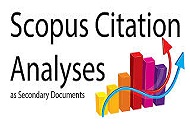Efektivitas Senyawa Bioaktif Ekstrak Kencur (Keampferia galanga Linn) Menggunakan Berbagai Metode Ekstraksi
DOI:
https://doi.org/10.33394/jk.v1i2.425Keywords:
Bioactive Compounds, Kencur Extracts, Extraction MethodsAbstract
flavonoid, fenolic compound, and alkaloid were used as an antibacterial agent. The aimed of this research
were to isolated Keampferia galanga’s anti bacterial compound using various extraction methods i.e stew,
infuse, and maseration using ethanol as solvent. The research was laboratory experimental and designed using
completely randomized method with 75 μl volume extract and 3X repetition. The antibacterial activity test
were used wall diffusion methods. The inhibition zone were tabulated and analyzed using one way analysis of
variance (ANAVA). The result showed that there were signifant differences on S. typhimurium growth
between stew, infuse, and maseration methods on 5 % significant level, but the the inhibition zone were weak
(less than 15 mm in diameter). So it can be concluded that the maseration method using ethanol as a solvent
showed weak inhibition activity on S. typhimurium growth.
References
Anonim. (2009). Demam tifoid. Sumber:
http://medicine.uii.ac.id/index.php/A
rtikel/Demam-Tifoid.html. Diakses
pada 13 Desember 2012
Anonim, 2012. Kencur. Sumber
www.wikipedia.com. Didownload
pada 21 Oktober 2013.
Pratama, I.B. 2012. Tugas Akhir : Metode
Pengambilan Minyak Atsiri dalam
Rimpang Kencur (Kaempferia
galanga L.) Menggunakan Ekstraksi
Gelombang Mikro. Universitas
Diponerogo, Semarang.
Robinson, T. 2005. Kandungan Organik
Tanaman Tingkat Tinggi. Penerbit
ITB. Bandung.
Rochmaulana, R. A. dan Wahyudi, A. 2010.
Sintesis Senyawa Turunan Kurkumin
dan Uji Aktivitas Antioksidan
dengan Metode Bleaching β-Karoten.
Jurusan Kimia. Fakultas Matematika
dan Ilmu Pengetahuan Alam Institut
Teknologi Sepuluh Nopember
Surabaya.
Yuyun, Y. 2003. Skripsi: Identifikasi
golongan senyawa aktif dari ekstrak
rimpang kencur sebagai larvasida
dan insektisida terhadap nyamuk
Aedes aegypti. Institut Pertanian
Bogor, Bogor.
Downloads
Published
How to Cite
Issue
Section
Citation Check
License
License and Publishing AgreementIn submitting the manuscript to the journal, the authors certify that:
- They are authorized by their co-authors to enter into these arrangements.
- The work described has not been formally published before, except in the form of an abstract or as part of a published lecture, review, thesis, or overlay journal.
- That it is not under consideration for publication elsewhere,
- That its publication has been approved by all the author(s) and by the responsible authorities – tacitly or explicitly – of the institutes where the work has been carried out.
- They secure the right to reproduce any material that has already been published or copyrighted elsewhere.
- They agree to the following license and publishing agreement.
Authors who publish with JK agree to the following terms:
- Authors retain copyright and grant the journal right of first publication with the work simultaneously licensed under a Creative Commons Attribution License (CC BY-SA 4.0) that allows others to share the work with an acknowledgment of the work's authorship and initial publication in this journal.Â
- Authors are able to enter into separate, additional contractual arrangements for the non-exclusive distribution of the journal's published version of the work (e.g., post it to an institutional repository or publish it in a book), with an acknowledgment of its initial publication in this journal.
- Authors are permitted and encouraged to post their work online (e.g., in institutional repositories or on their website) prior to and during the submission process, as it can lead to productive exchanges, as well as earlier and greater citation of published work.
- Open Data Commons Attribution License, http://www.opendatacommons.org/licenses/by/1.0/ (default)

This work is licensed under a Creative Commons Attribution-ShareAlike 4.0 International License.








